Event Overview
Waste to Energy Asia Summit
The world is running out of fossil fuels, and we need to find new ways to generate energy. Converting waste into energy is a clean and efficient way to generate power. It doesn’t produce the same level of pollution as traditional fuel sources, and it helps reduce our dependence on fossil fuels.
We need to find ways to convert waste into energy today in order to address the issue of climate change. By converting our waste into energy, we can reduce our reliance on polluting fuels and help preserve our environment for future generations.
What is waste to energy?
Waste to energy is a process of turning waste into electricity. This is a clean and efficient way to generate power, and it doesn’t produce the same level of pollution as traditional fuel sources.
Is waste to energy effective?
Yes, waste to energy is an effective way to generate power. It doesn’t produce the same level of pollution as traditional fuel sources, and it helps reduce our dependence on fossil fuels.
There are many reasons to believe that waste to energy is a more efficient renewable energy source than other types of renewables. First, waste to energy facilities can be located near population centers, which reduces the amount of energy lost in transmission. Second, waste to energy plants tend to have higher capacity factors than other types of renewable energy sources, meaning that they produce more electricity per unit of capacity.
Can all types of waste be used?
The different types of waste that can be used in waste to energy are municipal solid waste, agricultural waste, and industrial waste. Municipal solid waste is the most common type of waste that is used in this process. It includes everyday items like paper, plastic, and metal. Agricultural waste includes things like manure, straw, and wood chips. Industrial waste includes things like slag, ash, and boiler dust. Municipal solid waste is the most common type of waste that is used in waste to energy.
Demographic context, waste generation, and waste management in Southeast Asian countries
(a) Brunei Darussalam
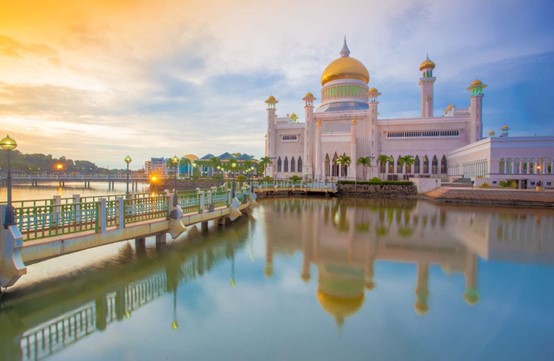
Brunei Darussalam has 423,188 residents, and its urban population was 77% of the total in 2015. Along with the waste generation of 0.87 kg per capita per day, the total annual waste generation in 2015 amounted to 210,000 tons per year, and the collection efficiency was 90%. The country disposes of the majority of waste to disposal sites, but it only composts 2% of its waste. With costly waste management infrastructure and limited land area, the country has encountered a lack of capacity in the design, implementation, and monitoring of policies, programs, and projects. However, the country is developing projects based on a public–private partnership (PPP) mechanism for the waste management sector. It is expected to contribute 10% renewable energy share in power generation by 2035, excluding hydropower. The potential share of renewable energy, in total, of the primary energy supply has been projected to reach 4% in 2025 and 7% in 2030.
(b) Cambodia

Cambodia has 15,577,899 residents, and its urban population was 21% of the total in 2015. Along with the waste generation of 0.6 kg per capita per day, the total annual waste generation in 2014 amounted to 1,089,000 tons per year, and the collection efficiency was 80%. The recycling sector contributes 20% of the total waste generation. Despite a lack of policies and programs that address significant reduction of MSW, the country is preparing an integrated solid waste management strategy for the future development of the MSW management sector. However, there is still limited awareness and behavior of people related to the concept of sustainable cities/green cities. The country has set a target of 27% emission reduction by 2030 relative to business-as-usual (BAU) in the energy industry. The potential share of renewable energy in total primary energy supply is projected to reach 35% in 2025 and 44% in 2030.
(c) Indonesia
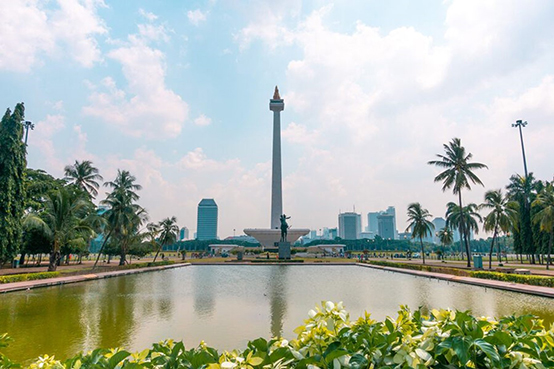
Indonesia has 255,993,674 residents, and its urban population was 54% in 2015. Along with the waste generation of 0.52 kg per capita per day, the total annual waste generation in 2012 amounted to 22,500,060 tons per year, and the collection efficiency ranged from 56% to 75%. Indonesia has set major policies, programs, strategies, and projects for MSW, and it has successfully implemented the concept of an MSW management system despite it currently being not well-implemented and enforced at all government levels. Twelve waste-to-energy plants are expected to be completed in 2022 and produce 234 megawatts (MW) of electricity. However, there is still a lack of knowledge and skills at the technology, financial, and institutional levels with high investment costs and limited project support. The target for biomass and waste policy in Indonesia is expected to achieve 810 MW by 2025 and to contribute a 23% non-renewable energy share in the energy mix in 2025. The country has targeted the achievement of a 29–41% emission reduction by 2030 by means of the promotion of clean and renewable energy and energy conservation.
(e) Laos PDR

Laos PDR has 6,802,023 residents, and its urban population was 39% in 2015 . Along with the waste generation of 0.7 kg per capita per day, the total annual waste generation in 2015 amounted to 77,000 tons per year, and the collection efficiency was in the range of 40–70%. Regarding the MSW management system, the country has well-set environmentally sustainable city guidelines related to the future development of the MSW sector. Incineration as a waste-to-energy technology option currently contributes 2% out of the total waste disposal methods. However, the country still lacks comprehensive policies, programs, equipment, and technology for MSW management, in addition to a limited awareness and behavior of people regarding the concept of sustainable cities/green cities. Laos PDR is projected to achieve a 30% renewable energy share of total energy consumption by 2025, excluding hydropower, and 10% biofuel use in transport sectors by 2025.
(f) Malaysia
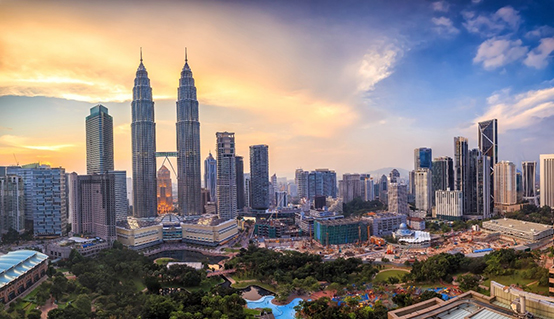
Malaysia has 30,331,007 residents, and its urban population was 75% in 2015. Along with the waste generation of 1.52 kg per capita per day , the total annual waste generation in 2015 amounted to 10,680,000 tons per year, and the collection efficiency was above 70%. Coordination among relevant local, state, and federal agencies in the waste sector is a key prerequisite for effective waste management. The incineration plant in Selangor has a capacity of 1000 tons per day or 8.9 MW of electricity generation, and, while in operation with 70% of its actual capacity, it can generate 5 MW of electricity . The total capacity of operating landfill biogas plants registered under the feed-in-tariff (FiT) scheme from 2012 to 2018 was around 13.8 MW, and the planned capacity in three more new projects is about 11.7 MW. Located in Tanah Merah, Negeri Sembilan, the first waste-to-energy plant project is planned to facilitate 1000 metric tons of solid waste daily and to produce 20–25 MW of electricity for powering 25,000 households. However, the country lacks a strong understanding of waste composition, an adequate awareness of the 3Rs (Reduce, Reuse and Recycle) practice, and the budget for raising awareness programs. The country will increase the capacity of renewables to 2.08 GW by 2020 and 4 GW renewable energy in installed capacity by 2030, which excludes hydropower. Additionally, the country has set a target to achieve a 35% GHG reduction by 2030 from the 2005 level—or up to 45% with international support].
(g) Myanmar

Myanmar has 53,897,154 residents, and its urban population was 34% in 2015. Along with the waste generation of 0.44 kg per capita per day, the total annual waste generation in 2015 amounted to 1,130,040 tons per year, but the collection efficiency remained below 50%. The recycling sector contributes 5% in Yangon City . Despite the policies and programs set for MSW, the country has been weak in developing an action plan and projects. Additionally, the country lacks knowledge, experts, and skilled personnel, and it has had few projects and a limited awareness of people related to the concept of sustainable cities/green cities. The capacity of the first waste-to-energy plant operated in Yangon in 2017 was 0.76 MW. The country has set a target of a 15%–20% renewable energy share in its installed capacity by 2030, excluding hydropower. Moreover, the country has planned to reduce its GHG emissions by 16% below the BAU level by 2020 and to stabilize its GHG emissions by around 2030 without reaching a peak limit.
(h) Philippines
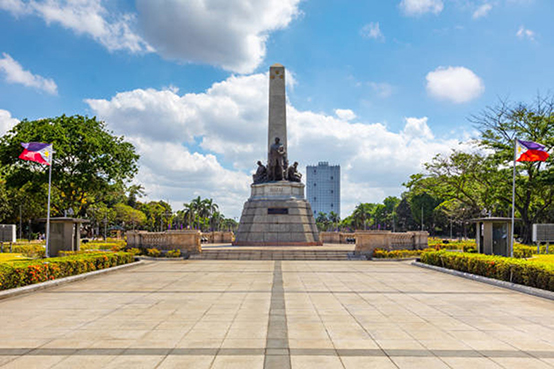
Philippines has 100,998,376 residents in 2015, and its urban population was 44%. Along with a waste generation of 0.5 kg per capita per day. the total annual waste generation in 2015 amounted to 14,400,000 tons per year, and the collection efficiency ranged from 40% to 90%, depending on the city . Though the country has set MSW policies and programs, the regulations related to different MSW components need to be integrated and improved . The informal private sector is, in a major way, involved in collection, transportation, and disposal in areas other than the metropolitan areas . Due to high investment cost for MSW management, the country has limited projects and awareness of people concerning the concept of sustainable cities/green cities. The biomass and waste policy target in Philippines has been set to achieve 267 MW by 2030 and 15 GW of installed capacity in 2030 . The country has also planned to reduce 70% of its CO2 emission by 2030 relative to its BAU scenario.
(i) Singapore

Singapore has 5,540,000 residents, with a 100% urban population in 2015 . Along with a waste generation of 1.49 kg per capita per day , the total annual waste generation in 2015 amounted to 7,670,000 tons per year. The amount of the organic waste is 1,520,000 tons per year, and the collection efficiency is above 90% . The country has long-been a regional leader in waste-to-energy development that is currently aiming to reduce the average daily amount of waste sent to Semakau landfill by 30% . Currently, the country’s solid waste disposal infrastructure consists of four waste-to-energy plants: Tuas (47.8 MW), Senoko (55 MW), Tuas South (132 MW), and Keppel Seghers Tuas Plant (KSTP) (22 MW), in addition to the Semakau Landfill . The country’s biggest constraint is its amount of land, considering the growth of waste generation and technological options . The largest waste-to-energy plant (moving grate system) has a capacity of 4300 tons of mixed MSW per day . The country has set a target to achieve a 36% emission intensity reduction by 2030 from its 2005 level . Additionally, the potential share of renewable energy in total primary energy supply has been projected to reach 3% in 2025 and 4% in 2030 .
(j) Thailand

Thailand has 67,959,259 residents, and its urban population was 50% in 2015 . Along with the waste generation of 1.76 kg per capita per day, the total annual waste generation in 2015 amounted to 26,850,000 tons per year, and the collection efficiency was above 80% . Though the country has set policies, regulatory frameworks, programs, and plans, there is a need for cost-effective technology for biomass utilization and sustainable financial and technical resources for MSW management . The 10-year alternative energy development plan (2012–2021) is aimed to boost alternative energy usage (waste-to-energy) up to 25% of overall usage by increasing from 44.324 MW of its current capacity to 160 MW of power and 100 kilotons of oil equivalent (ktoe) of thermal power (current capacity, landfill gas: 22.23 MW; incineration and gasification: 20.06 MW; biogas: 2.034 MW; thermal: 78.59 ktoe; biomass: 1.28 ktoe; and refuse derived fuel (RDF): 77.31 ktoe) . The country has set a target to achieve a 30% renewable energy share in total energy consumption by 2036, excluding hydropower , and a 20% GHG reduction by 2030 relative to BAU—and up to 25% with international assistance .
(k) Vietnam
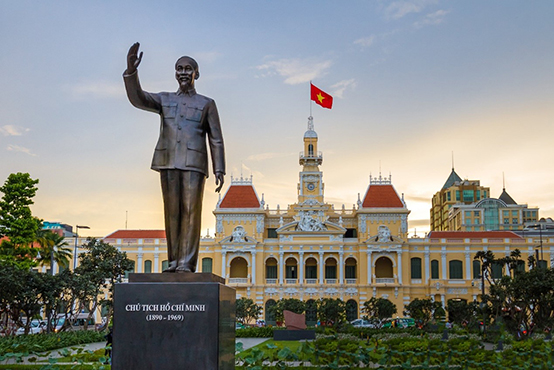
Vietnam has a total population of 91,700,000 residents, with a 34% urban population in 2015 . Along with the waste generation of 1.46 kg per capita per day, the total annual waste generation in 2015 amounted to 12,800,000 tons per year, and the collection efficiency was in the range of 80–82% . The country has developed a regulatory framework with an integrated solid waste management strategy, but it still lacks financial resources for implementing interventions and investing in GHG reduction projects in the waste sector . Attracting investor interest from China, Japan, and other countries , the Ho Chi Minh City Municipality has released a set of criteria for investing in waste-to-energy projects that can process domestic waste up to 9300 tons per day . Additionally, the government has set a high electricity purchasing price for waste-to-energy of up to USD 10.05 cents per kWh, which is even higher than prices for wind and solar power . The country has targeted to achieve a 27 GW renewable energy installation in 2030 (excluding hydropower) and an 8% GHG emission reduction—or 25% with international support—by 2030 relative to BAU .
Data updated :19 October 2020
Biomass energy Asia Summit
Biomass energy is by far the largest renewable energy sources, representing 10.4% of the world’s total primary energy supply or 77.4% of global renewable energy supply . Asia is a key supplier of biomass feedstock to markets such as Europe or the United States but within the region, new opportunities and investments in biomass are emerging, particularly in Southeast Asia . Southeast Asia, with its abundant bioenergy resources, holds a strategic position in the global biomass energy atlas . It is also a big producer of agricultural and wood products, and according to conservative estimates, the amount of biomass residues generated from sugar, rice, and palm oil mills is more than 200–230 million tons per year, which corresponds to cogeneration potential of 16–19 gigawatts (GW) .
Nowadays, Southeast Asia is fast becoming an attractive market for developing biomass as an energy source and biomass energy could provide 26% of total primary energy supply, equal to 87% of the renewable energy supply . Many Southeast Asian countries are among the top producers of agricultural commodities such as rice, sugar, cane, palm oil, coconut, and rubber, and the most promising residues are rice husk, sugarcane bagasse, oil palm residue, and wood residues .
The average annual energy consumption in the Southeast Asian countries is estimated at approximately 3.9% and the average carbon emission has been increased by over 5% due to the fast economic growth in the region . Bakhtyar et al. state that increasing purchasing power parity leads to an increase in per capita electricity consumption, hence increasing per capita carbon dioxide (CO2) emission. Figure 1 shows a relationship between per capita electricity consumption, purchasing power parity, and CO2 emission. Although carbon dioxide is the largest source of global greenhouse gas emissions that come greatly from energy sector, it is not the case for some of the Southeast Asian countries, where forestry and agriculture are the major sources of emissions .
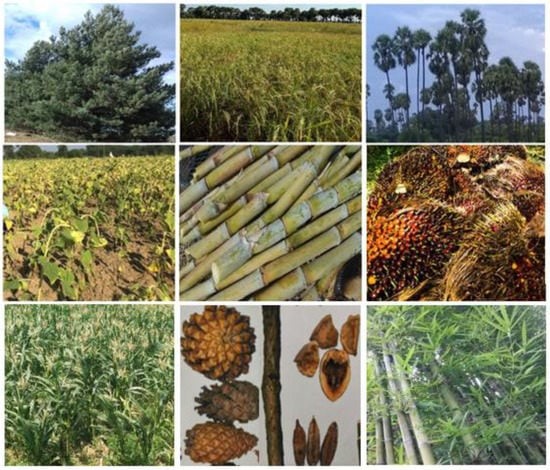
(a) Cambodia
Cambodia has 10,094,000 hectares of forest area, having 57% of the total area of the country. Therefore, wood and wood charcoal account for approximately 80% of the total energy consumption in Cambodia. Approximately 80% in urban and 94% in rural areas are used for cooking . The other major biomass sources come from agricultural residues including rice husk, rice straw, corn cob, cassava stalk, bagasse, groundnut shell and husk, and coconut shell and front. Currently, the total installed capacity from biomass is about 23 MW. Cambodia is planning to produce 73 MW of installed capacity from biomass by 2030.
(b) Myanmar
Myanmar is an agriculture country, covering 45% of the area with forest. Myanmar produces over 20 million tons of paddy annually. Therefore, the major biomass sources of the country are obtained largely from the forest and agriculture sector. Since 70% of the population resides in rural areas, they are mostly dependant on solid biomass fuels. Approximately 65% of the total energy consumption of the country comes from biomass sources . The total capacity potential from biomass and biogas is estimated at 6899 MW and 4741 MW, respectively . Out of this, the total installed capacity has reached 115 MW.
(c) Lao PDR
With 68% of the forest cover, Lao PDR has an abundance of biomass resources from the forest sector. Since the majority of the population live in the rural areas, 80% of the households rely on fire wood and charcoal, having 68% of its primary energy supplies . In addition to the forest sector, the agriculture could provide a wealth of biomass resources due to its agriculture economy. The installed capacity of biomass energy is about 40 MW and is being planned to achieve 58 MW by 2025.
(d) Vietnam
Being an agricultural country, Vietnam has an abundance of biomass energy sources, with over 300 GW of theoretical capacity potential . Biomass is mainly used in households (76%), and the rest (24%) is used in small industrial boilers and combined heat and power (CHP) plants in sugar mills . The major biomass sources include forest residues, rice husk, rice straw, bagasse, cane trash, maize trash, cassava stem, peanut shell, coffee husk, and coconut shell. The main energy consumption potential in Vietnam is aimed at municipal and industrial co-generation power plants . Vietnam has set a target of having a combined capacity of 500 MW of biomass power by 2020, which is raised to 2000 MW in 2030 .
(e) Philippines
As the energy needs of the Philippines rely predominantly on the imports of fossil fuels, the government have looked at renewable energy for possible alternatives . Among the alternatives, biomass energy is crucial to the country and nearly 30% of the energy for the 100 million people living in the Philippines come from biomass and are mainly used for household cooking by the rural population . Additionally, biomass industry is rapidly advancing, with 276.7 MW of a total installed capacity around the country . Biomass energy application accounts for around 15% of the primary energy use in the Philippines .
(f) Indonesia
Among the Southeast Asian countries, Indonesia has an abundant growing stock in forests due to its most extensive forest area, having 94,432,000 hectares . Besides, in Indonesia economies, important biomass fuels are derived from agriculture residues and used in both traditional and modern applications . The major agriculture biomass sources are oil palm residues, sugarcane residues, rice husk and rice straw, and corn cob. It is estimated that Indonesia produces 146.7 million tons of biomass per year, equivalent to about 470 million gigajoules (GJ) per year . The total estimated capacity potential from biomass accounts for approximately 50,000 MW, with 312 MW of installed capacity.
(g) Thailand
Thailand is an agricultural country, with a huge biomass energy potential for fulfilling additional energy requirements of the country. Biomass sources could cover up to 15% of the energy demand of the country . The capacity potential from utilization of biomass and biogas is estimated at 7000 MW and 190 MW, respectively . Most of the biomass-fired industrial facilities are large-scale, centralized plants operating at economies of scale . The installed capacity from biomass and biogas accounts for 1610 MW and 46 MW, respectively, with 3.630 GW of installed capacity for a project target by 2021 . Thailand’s board of investment (BOI) promotes the production of electricity or steam from renewable energy, such as biomass by an eight-year tax holiday, exemption of import duty on machinery, raw, or essential materials used in manufacturing export products .
(h) Malaysia
Malaysia has a huge forest area, with around 62% of the total land area. Agriculture also covers approximately 4,890,000 hectares of the whole country. Therefore, Malaysia has the numerous biomass resources such as oil palm residues, sugarcane residues, and coconut resides. The palm oil industry alone contributes to about 8% or over RM 80 billion to the country’s gross national income (GNI), making it by far the largest contributor within the agricultural sector, naturally generating the largest amount of biomass . Industry figures put this amount at 83 million dry tons in 2012 and this is likely to increase to 100 million dry tons by 2020 . The total installed capacity potential from biomass is estimated at 29,000 MW, with 211 MW of the installed capacity.
(i) Brunei Darussalam
With plentiful oil and gas resources, Brunei Darussalam relies majorly on fossil fuel not only for its national energy security and booming economy . For this reason, it had minimal interest in the use of renewable energies, but due to mounting worldwide interest in this and in order to diversify its energy sources and bolster its energy security, it set out a goal of adopting 10% electricity from renewable energies in 2035 . Biomass sources in the country account for coconut shell, coconut fiber, corn fiber, rice husk, and saw dust, with approximately 8.773 kilo GJ of the annual biomass energy potential.
(j) Singapore
Being composed of 63 islands, Singapore has a total area of 722.5 square kilometers and approximately two hectares of forest area. In 2007, Singapore identified clean technology as a key driver of economic growth, allocating S$700 million to fund research and development (R&D), innovation, and manpower development in the sector . Singapore has gained a reputation as a clean, green “garden city” . Utilization of horticultural and wood wastes processed by ecoWise could produce approximately 0.9 MW of electricity and 5.4 MW of heat for co-generation plant . The total biomass energy potential from biomass accounts for approximately 2.901 million GJ and the installed capacity from biomass sources accounts for 220 MW .
Nowadays, there already exists several applicable technologies for biomass energy utilization in the Southeast Asian region. These technologies include direct combustion and cofiring of biomass products for heat and electricity, anaerobic digestion of animal wastes for methane-rich gas, pyrolysis of biomass products for bio-char, gas, and oil, gasification of agricultural waste such as rice husk and others, wood chips, sawdust, forest residues, product waste, etc. In Thailand, the combustion of agriculture residues for power generation can be widely seen around the country. Meanwhile, in Myanmar, power generation from biomass gasification has been conducted by the government institutions and private sectors. Upon the different fuel alternatives and local supply demand, various ranges of generating capacities for the gasification plant can be found; especially rice husk biomass gasification shares the most due to that the staple food is rice in Myanmar agricultural system. Additionally, small villages within 100–200 households could be provided electricity for lighting with 10 kW power generation capacity via 25 hp gas engine, which was operated by biogas produced from 50 m3 fixed-dome type biogas plant using the cow dung waste from the household. A comparison between theoretical biomass energy potential and installed capacity with project targets in the Southeast Asian countries is presented in Table 3. By far, the total installed capacity in the Southeast Asian countries accounts for approximately 3 GW from biomass and around 330 megawatts (MW) from biogas. It was observed that the applied technologies for the installed capacity of biomass energy included gasification, co-firing, and direction combustion while the installed capacity of biogas power plants was majorly gained from anaerobic digestion.
As a major source of biomass fuels, fuelwood plays a key role for cooking and heating in the rural areas of most Southeast Asian countries. However, due to deforestation and logging (including illegal logging), the projected annual woody biomass production in natural forests declined from 815.9 million tons (16.3 EJ) in 1990 to 359.3 million tons (7.2 EJ) in 2020. Hence, average annual woody biomass production in all forests in Southeast Asia between 1990 and 2020 was estimated at 563.4 million tons (11.3 EJ) per year declining about 1.5% per year . In addition to deforestation, the development of renewable energy sector has largely affected the fuelwood consumption in the Southeast Asian region. Therefore, it could be seen that there is a decline in the projected annual consumption of fuelwood in Southeast Asia after 1990, trending from 222 million cubic meters in 1990 to 122 million cubic meters in 2020 (Figure 6a). Additionally, beyond 2020, it might potentially be seen that there could also be a substantial decline in annual fuelwood consumption in the Southeast Asian countries due to not only deforestation and logging but also the strategic plans and implementations of the ASEAN (Association of Southeast Asian Nations) community related to the promotion of the renewable energy sector development (majorly in hydropower, biomass energy, geothermal energy, solar, and wind energy). In the ASEAN community, it is found that the share of the renewable energy has been set a target from 15% for the total ASEAN installed power capacity by 2015 to 23% for the total ASEAN energy mix by 2023.
Data updated :25 April 2019
Renewable energy Asia Summit
The background to these ambitions is the compelling state of renewable assets in Asia. With just under 60% of the global population, more than half of global energy consumption, and as much as 85% of regional consumption sourced from fossil fuels today2, Asia both needs renewable energy and offers ample scope for project development.
Priorities vary: South Korea, for example, is a pioneering nation for offshore wind development, while India has conducted groundbreaking work in solar-powered irrigation.
Southeast Asian nations, given their tropical levels of sunlight, tend to tilt towards solar. In Thailand, for example, the Board of Investment approved 19 investment solar projects in 2022 with a total investment value of US$1.3 billion equivalent, followed by 12 wind power projects worth US$540 million. The Thai government wants 16,000MW of solar power by 2037, boosted by its ‘Adder’ programme, which encourages solar rooftop installations on government buildings.
(a) Thailand
Thailand also has a mature hydropower sector, which is unlikely to grow significantly but has potential for refinement. For example, the world’s largest hydro-floating solar farm has been developed at the Sirindhorn Dam. Thailand also offers growth in biomass and wind.
(b) Malaysia
Malaysia has potential across solar, wind, biomass, hydro, geothermal and tidal energy, but solar has been a standout. A technology called Net Energy Metering has been developed for solar PV systems, coupled with a solar leasing concept backed by the government.
(c) Vietnam
In Vietnam, solar and wind are considered to have the greatest potential, with Vietnam’s 3,260km coastline an asset. All told, foreign direct investment (FDI) for renewable energy in Vietnam in 2022 amounted to US$5.46 billion. According to the Ministry of Industry and Trade that figure is equivalent to 56.1% of all renewable investments. Wind follows with 20.4%.
(d) Philippines
In the Philippines, where there is a very strong track record of public-private sector partnership, hydro power has been the dominant renewable sector. To date, 352 of the country’s 645 grid-use renewable projects awarded by the government have been in the hydro space. Solar, geothermal, wind and biomass are also active. Biofuel and ocean energy projects are less widespread but have been successfully rolled out.
(e)Singapore
Singapore lacks the space for widespread renewable rollouts of technologies like wind farms, but is prioritising solar, energy storage systems and smart grids. Short of available land, Singapore has become creative in finding places for solar deployment: examples include temporary vacant land and even bodies of water. Smart grids fit with the city state’s reputation for digital efficiency and innovation, allowing more diverse sources of renewable energy to be used while ensuring grid stability.
Categories
Latest News
Contact Us
Contact Us To Have Your Registration Paper
Tel: +86 21 6104 7706
Cell: +86 153 0180 5979
Email: info@inbcglobal.com
Our account manager will serve your side to help you secure the seat.
Or you can do the online
pre-registration here!
 weboss
weboss wingjslm
wingjslm
 weboss
weboss